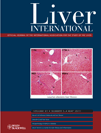Increased risk of parkinsonism among patients with cirrhosis: a 7-year follow-up study
Abstract
Background/Aims: Previous studies have suggested that hepatic (toxic-metabolic) encephalopathy, the major complication of cirrhosis, is a neuropsychiatric disorder typically seen in patients with liver dysfunction after exclusion of other known brain disease. This study aims to investigate the risk for parkinsonism during a 7-year follow-up period after a diagnosis of cirrhosis.
Methods: In total, 1361 patients with cirrhosis and 6805 comparison patients without cirrhosis were included in this study. Each patient was then individually tracked for 7 years from the time of their initial diagnosis of cirrhosis to identify those who developed parkinsonism during the follow-up period. Stratified Cox proportional hazard regressions were conducted to calculate the hazard of parkinsonism for the two groups during the follow-up period, after adjusting for patient's age, monthly income, level of urbanization and geographic location.
Results: Of the total 8166 sampled patients, 141 (1.7%) developed parkinsonism during the follow-up period, 48 from the study group (3.5% of the patients with cirrhosis) and 93 from the comparison group (1.4% of patients in the comparison group). Stratified Cox proportional hazard regressions show that the hazard for parkinsonism for patients with cirrhosis was 2.65 times as high (95% confidence interval=1.85–3.80, P<0.001) as the patients in the comparison group over the 7-year follow-up period, after adjusting for patient's age, monthly income, level of urbanization and the geographic location of the community in which the patient resided.
Conclusions: We concluded that cirrhosis significantly increased the risk of parkinsonism.




